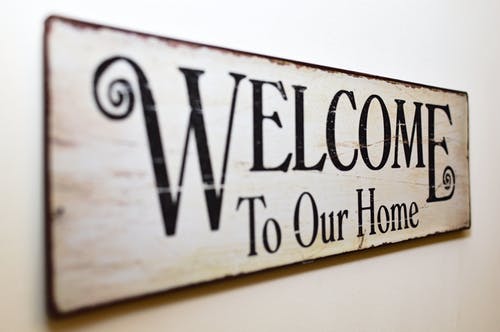
Baby boomers who are approaching retirement may find themselves in a home that is not friendly for aging in place. Or, if they are in the right home, they may struggle to pay for renovations and may choose to move and right-size into a more appropriate home. One financial option that could help answer key questions like how and where they can live out their golden years is a reverse mortgage loan.
Seniors with enough home equity can use a reverse mortgage to access funds to pay for costly renovations or to “right-size” with the purchase of a home they plan to retire in. From the big picture to room-specific features this article presents what homeowners should keep in mind when making this decision.
The Big Picture
Seniors should consider overarching factors like cost, size, and location to decide if staying put or relocating are in their best interest. This will help determine whether the cost of maintaining (and potentially renovating) a larger home is worth it, or if downsizing will make more sense down the road financially and comfort-wise.
What to consider:
- Cost: Determine the costs associated with renovations or buying a new home
- Size: Consider if your current home is too big for your current needs
- Location: Proximity to friends and family
- Healthcare: Accessible healthcare options
- Transportation: Accessible public transportation or ease of traffic
- Climate: Preparedness for extreme weather scenarios
General Exterior
There are several aspects of a home seniors should take into consideration before they even get through the door. For example, a large lot with extensive landscaping may become a hassle and financial burden later in life.
What to consider:
- Manageable yard size that requires minimal maintenance
- Thorough lighting along all walkways, steps, and stairs
- Stable railings and nonslip surfaces along stairways
- At least one entrance not requiring steps or a ramp
- Functioning locks and motion-activated lights for security
General Interior
Several feature’s seniors should consider throughout their homes allow for comfort, convenience and safety in retirement.
What to consider:
- Accessible storage options
- Good lighting with easy to reach switches
- Secured rugs and carpeting
- Non-slip surfaces in non-carpeted areas
- Large entryways to accommodate wheelchair access
- Security and assistance systems in place
Kitchen
A kitchen that worked during child-rearing years may not be as functional during retirement.
What to consider:
- Shallower sinks
- Pull out shelving
- Lower working surfaces
- Rounded edges to countertops
- Clearance for walkers and wheelchairs
- Accessible layout for easy maneuvering
- Easy to grab handles and knobs
Bathrooms
As one of the most frequented spaces in the home that just so happens to be where most slips and falls occur, it is imperative to ensure the space is safe and accessible.
What to consider:
- A comfort height toilet
- Nonslip flooring and shower mats
- Good lighting with easy to reach switches
- Low counters with wheelchair and walker clearance
- Zero-threshold showers with room for a wheelchair
- Hand-held shower head and sturdy shower bench
- Grab bars positioned by the shower and toilet
Laundry Room
It is common to tuck the laundry room out of sight, but, that could mean having to carry large loads up and down a set of stairs or from an inconvenient part of the home to the bedroom.
What to consider:
- Laundry set up in the main area of the home
- Elevated & front-facing units to avoid bending over
Bedrooms
The location of the master bedroom is the biggest indicator of how much or little you’ll need to do as they often don’t require much work.
What to consider:
- Renovating a downstairs bedroom into the master suite if it’s currently upstairs
- Installing a chair lift on the staircase
Whether you choose to renovate your current home or purchase a new home, a reverse mortgage can help fund your decision. Keep in mind that this loan does require homeowners to1:
- Live in the home as the primary residence
- Continue to pay required property taxes & insurance
- Maintain the home according to FHA requirements
Are you interested in learning how to use a reverse mortgage to renovate or purchase a new home in retirement? Call (800) 976-6211 to speak with a licensed reverse mortgage specialist to see how much you may qualify for.
Disclosure
1 Failure to meet these requirements can trigger a loan default that
may result in foreclosure.
